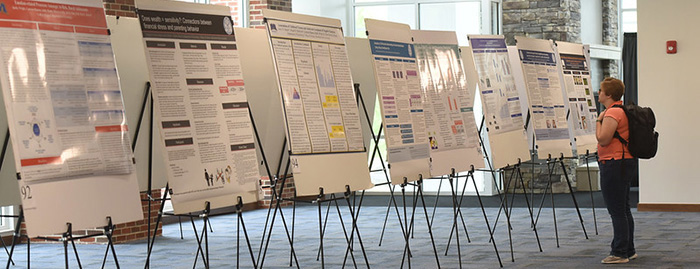Files
Download Full Text (1.2 MB)
Description
Fungi play a key role in the terrestrial carbon cycle, soil formation, and overall plant growth as terrestrial decomposers (1, 2). Thus, the study of fungi, especially in the fossil record, is critical to understanding how fungal assemblages will react to future warming events. Fossil fungi provide a large-scale, long-term dataset unavailable from modern records, allowing for the generation of viable paleoclimate reconstructions and predictions (3, 4). Despite their importance and advantages in forming ecological and climatological interpretations, deep-time fungi have been underutilized (3). The Fungi in a Warmer World (FiaWW) project aims to deliver the first global view of fungal biodiversity, ecology, and biogeography for the Miocene Climate Optimum (MCO): the warmest interval of the last 23 MY. The MCO is a good proxy for near-future climate change scenarios because atmospheric CO2 concentrations ranged between current concentrations of ~400ppm and future projected concentrations for the end of this century (5, 6).
Publication Date
4-2022
Disciplines
Arts and Humanities | Business | Education | Engineering | Higher Education | Life Sciences | Medicine and Health Sciences | Physical Sciences and Mathematics | Social and Behavioral Sciences
Recommended Citation
Jones, Savannah; Horsfall, Taylor; Tarlton, Laikin; Caldwell, Abigayle; Smallwood, Liberty; Fairchild, Jolene; Lennex-Stone, Libby; Patel, Alyssa; Vanderespt, Olivia; Romero, Ingrid; O'Keefe, Jennifer; Nunez Otano, Noelia; Warny, Sophie; and Pound, Matthew, "Fungi in a Warmer World: Middle Miocene Fungal Assemblages and Diversity from Alum Bluff, Florida" (2022). 2022 Celebration of Student Scholarship - Poster Presentations. 44.
https://scholarworks.moreheadstate.edu/celebration_posters_2022/44

Included in
Arts and Humanities Commons, Business Commons, Engineering Commons, Higher Education Commons, Life Sciences Commons, Medicine and Health Sciences Commons, Physical Sciences and Mathematics Commons, Social and Behavioral Sciences Commons

